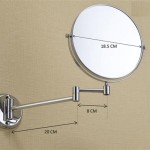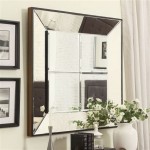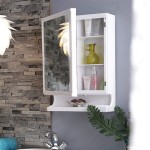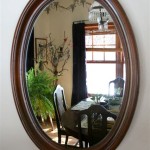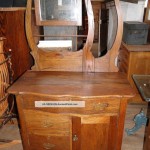How To Repair a Broken Mirror Frame
A damaged mirror frame detracts from the mirror's aesthetic appeal and can pose safety hazards. Fortunately, most frame repairs are achievable with readily available tools and materials. This guide outlines the procedures for repairing various types of mirror frame damage.
Assessment of the Damage
Before initiating any repair, a thorough assessment of the damage is crucial. This involves identifying the frame material (wood, metal, plastic, etc.), the type of break (clean break, splintering, cracking), and the extent of the damage. Accurate assessment informs the appropriate repair strategy and selection of materials.
Gathering Necessary Tools and Materials
The required tools and materials vary depending on the frame material and the damage. Commonly used tools include wood glue, epoxy, wood filler, sandpaper, clamps, a small hammer, a utility knife, and safety glasses. For metal frames, metal epoxy or solder may be necessary, along with appropriate metalworking tools. Plastic frames may require specific plastic adhesives or solvents.
Repairing Wooden Frames: Simple Breaks
For clean breaks in wooden frames, wood glue is typically sufficient. First, clean the broken surfaces to remove any debris or loose fragments. Apply wood glue evenly to both broken surfaces. Carefully align the pieces and clamp them firmly together. Excess glue should be wiped away immediately with a damp cloth. Allow the glue to dry completely according to the manufacturer's instructions, typically 24-48 hours, before removing the clamps.
Repairing Wooden Frames: Splintered or Damaged Breaks
More complex breaks involving splintering or significant damage require additional steps. Small splinters can be carefully glued back into place using wood glue. For larger missing pieces or substantial damage, wood filler can be used to reconstruct the damaged area. Apply the wood filler according to the manufacturer's instructions, shaping it to match the original frame profile. Once the filler is dry, sand it smooth and blend it seamlessly with the surrounding frame. Painting or staining may be necessary to match the original frame finish.
Repairing Metal Frames
Metal frames require different approaches depending on the metal and the break. For clean breaks, metal epoxy provides a strong bond. Clean the broken surfaces thoroughly to remove any oxidation or debris. Apply the epoxy according to the manufacturer's instructions and clamp the pieces together until the epoxy cures. Soldering can be used for more complex repairs or for joining intricate metalwork. This requires specialized tools and skills. For hairline cracks, a metal filler compound can be used to fill the crack and prevent further damage.
Repairing Plastic Frames
Repairing plastic frames can be challenging due to the variety of plastic types. Specific plastic adhesives or solvents are often required to create a strong bond. Consult the manufacturer's information or a plastics specialist for the recommended adhesive for the specific type of plastic. Clean the broken surfaces with a suitable cleaning agent before applying the adhesive. Clamp the pieces together until the adhesive dries completely.
Reinforcing the Repair (Optional)
For added strength and stability, particularly for larger frames or heavier mirrors, reinforcement can be beneficial. Wood frames can be reinforced with wood dowels or metal brackets glued and screwed into place. Metal frames can be reinforced with additional metal supports or by brazing or welding. Reinforcements should be discreetly placed to avoid disrupting the frame's aesthetics.
Finishing the Repair
Once the repair is complete and the adhesive or filler has fully cured, the repaired area may require finishing to match the original frame. This can involve sanding, painting, staining, or applying a clear coat. Careful attention to detail will ensure a seamless and aesthetically pleasing repair.
Safety Precautions
Throughout the repair process, prioritize safety. Wear safety glasses to protect eyes from dust, debris, and chemical splashes. Use appropriate ventilation when working with adhesives, solvents, or paints. Follow the manufacturer's safety instructions for all materials and tools.
Seeking Professional Assistance
For complex breaks, valuable antique frames, or when dealing with uncertain materials, seeking professional restoration services is recommended. Professional restorers possess the expertise and specialized tools to handle intricate repairs and preserve the integrity of the frame.

How To Repair A Broken Mirror Frame Corner Designed Decor

Aleene S Original Glues How To Repair A Broken Mirror Frame

How To Repair A Broken Mirror Frame Diy Inspired

How To Repair A Broken Mirror Frame Diy Inspired

How To Repair A Broken Mirror Frame Diy Inspired

How To Repair A Broken Mirror Frame Corner Designed Decor

How To Repair A Broken Mirror Frame Diy Inspired

How To Repair A Broken Mirror Frame Diy Inspired

Whoops How To Repair A Broken Frame Tinged Blue

Aleene S Original Glues How To Repair A Broken Mirror Frame
